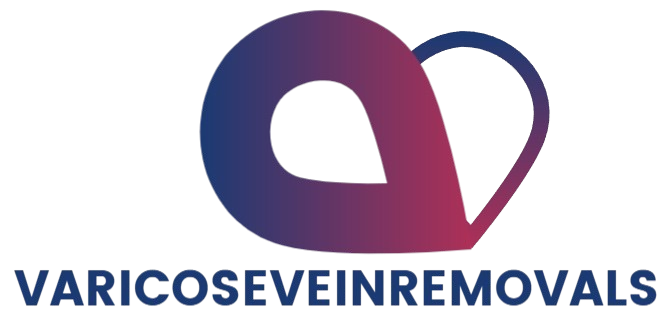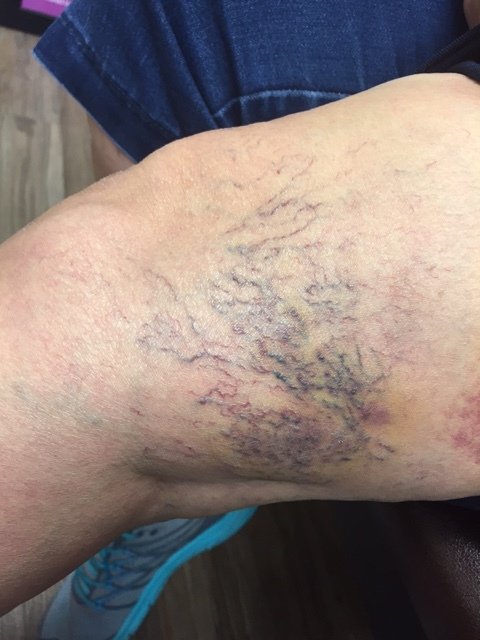Varicose veins are a common condition, yet many people are unsure about what they are, what causes them, or how to treat them. These swollen, twisted veins can often be seen on the legs and may cause discomfort, but in many cases, they go untreated due to confusion about their severity or how to address them. To help clear things up, here are five of the most frequently asked questions about varicose veins, answered by experts in the field.
1. What Exactly Are Varicose Veins?
Varicose veins are enlarged, twisted veins that typically appear on the legs. They occur when the veins become stretched and lose their elasticity, causing them to bulge and twist just beneath the surface of the skin. These veins may appear blue or purple, especially if they are close to the skin, and are often referred to as “rope-like” due to their swollen, twisted appearance.
Smaller veins, sometimes referred to as “spider veins,” are a milder version of varicose veins. These fine, blue veins are often seen on the skin’s surface and can be a sign of an underlying issue with the veins, known as Chronic Venous Insufficiency (CVI).
2. What Is Chronic Venous Insufficiency (CVI)?
CVI is the underlying condition that often causes varicose veins. It occurs when the one-way valves inside the veins of the legs become damaged or weakened. These valves are responsible for keeping blood flowing toward the heart, against gravity. When they stop functioning properly, blood begins to flow backward and pool in the veins, leading to increased pressure and vein enlargement.
As CVI progresses, it can cause symptoms such as leg swelling, aching, heaviness, fatigue, and in some cases, skin discoloration or sores. In the later stages, CVI can even lead to the formation of venous ulcers, which are open sores that can be difficult to heal. The pressure buildup in the veins is often exacerbated by prolonged periods of standing or sitting.
To diagnose CVI, a vascular specialist may recommend a color Doppler ultrasound. This non-invasive test helps evaluate the function of the valves and determines the extent of the vein damage.
3. What Causes Varicose Veins?
Varicose veins affect millions of people worldwide, with women being more commonly affected than men. The condition can arise from a variety of factors, and while some causes are beyond our control, others are linked to lifestyle choices.
- Genetics: One of the biggest risk factors for developing varicose veins is family history. If your parents had varicose veins, there’s a higher chance you will develop them as well.
- Age: As we get older, the veins in our legs naturally lose their elasticity, which makes them more prone to bulging.
- Pregnancy: Pregnancy can increase the risk of varicose veins due to hormonal changes and the added pressure on the veins from carrying a baby.
- Prolonged Standing or Sitting: Occupations or activities that require long periods of standing or sitting can contribute to varicose veins. When you stand or sit for extended periods, the blood in your veins struggles to flow upward, leading to pressure buildup.
- Prior Deep Vein Thrombosis (DVT): A history of blood clots can also increase the likelihood of developing varicose veins, as the veins may be damaged during the clotting process.
4. How Can I Prevent Varicose Veins from Developing?
While it may not be possible to completely prevent varicose veins, there are several lifestyle changes you can make to reduce the risk or alleviate symptoms if you already have them:
- Stay Active: Regular exercise, especially walking, helps stimulate blood flow in your legs. Walking works your calf muscles, which act as a pump to push blood upward through the veins.
- Elevate Your Legs: Whenever possible, elevate your legs above your heart to help improve circulation and reduce swelling. This simple habit can help relieve discomfort caused by venous insufficiency.
- Wear Compression Stockings: These special stockings apply pressure to the legs and improve blood circulation. Wearing compression stockings, typically with 20-30 mmHg of pressure, can help prevent the development of varicose veins and ease symptoms in those who already have them.
- Avoid Long Periods of Standing or Sitting: If your daily routine involves standing or sitting for extended periods, make sure to take breaks. Moving around, stretching, or even standing on your tiptoes can help reduce blood pooling in the legs.
5. What Are the Treatment Options for Varicose Veins?
If lifestyle changes and preventive measures aren’t enough, various treatment options are available to address varicose veins, ranging from conservative methods to more advanced procedures. The choice of treatment depends on the severity of the varicose veins and the patient’s overall health.
- Endovenous Ablation: This minimally invasive procedure uses either laser or radiofrequency energy to close off the problem vein. It’s a common treatment for larger veins and is performed on an outpatient basis.
- Sclerotherapy: For smaller varicose veins and spider veins, sclerotherapy is an effective treatment. It involves injecting a solution directly into the vein, causing it to collapse and fade over time. This procedure is often used for cosmetic purposes and has a high success rate.
- Phlebectomy: In cases where the veins are large and prominent, a small incision is made to remove the veins. This procedure is usually reserved for more advanced cases and may be combined with other treatments like ablation or sclerotherapy.
- Lifestyle Modifications: As mentioned earlier, wearing compression stockings, staying active, and elevating your legs can go a long way in managing varicose veins and preventing them from worsening.
Conclusion
While varicose veins are a common and often manageable condition, they can cause discomfort and impact your quality of life. Understanding the underlying causes, knowing how to prevent them, and seeking the right treatment can significantly improve your symptoms and appearance.
If you’re dealing with varicose veins or suspect you may be at risk, consult with a vascular specialist to explore your options and create a treatment plan that suits your needs. Whether through lifestyle changes or medical intervention, it’s possible to reduce the impact of varicose veins and maintain better leg health for years to come.



